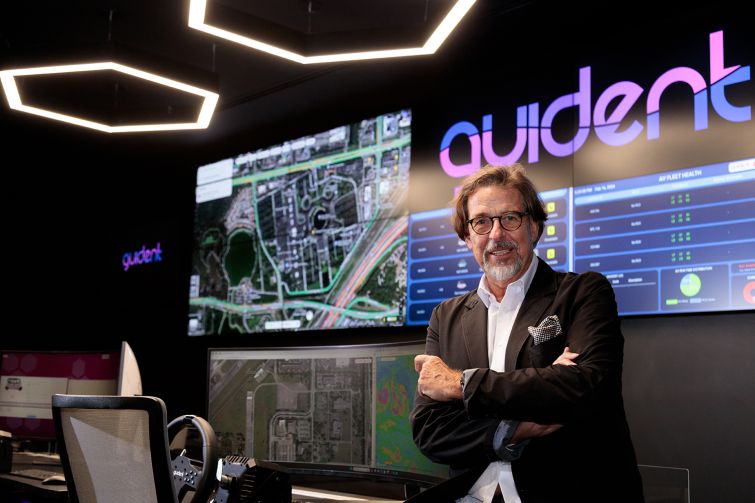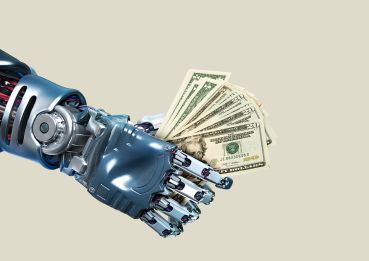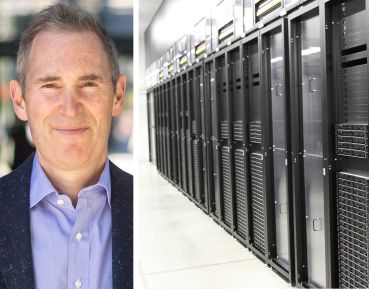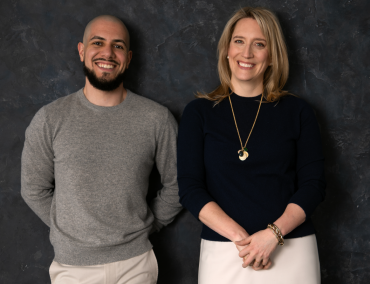What a Tech Company Wants in Its Office, Per Guident CEO Harald Braun
The autonomous vehicle company just took space in a famous South Florida office park
By David M. Levitt April 2, 2024 10:00 am
reprints
Yes, autonomous vehicles remain in the experimental stage far, far away from being utilized the way their advocates envision: shuttling people from place to place, making deliveries, trucks delivering goods hither and yon — an everyday part of our everyday lives.
But, already, experimental cars are moving tech personnel through the Bay Area. And, at Miami International Airport, a group is evaluating the use of robotics and autonomous technology in baggage handling, aircraft towing, food delivery, cleaning, maintenance and wayfinding.
And autonomous vehicles, like their human-guided cousins, require a hodgepodge of technologies from all over the world to make them go. The steering column could be made in Mexico, the radio in Germany, the tires here in the good old U.S. of A.
That’s where Guident comes in. The technology company was founded in 2019. It says its mission is to improve the safety of autonomous vehicles, aka self-driving cars, by controlling their safe and careful operation remotely, with a human in the loop, from a remote monitor and control center in Boca Raton, Fla. Guident said that the control center is the first of its kind in the United States. That’s good news for commercial real estate, an industry in dire need of some good news: a labor-intensive new tenant category, intent on moving into a building and staying for years.
But it’s far from that simple. Companies involved in developing autonomous vehicles and similarly complex technology require a ton of sophisticated and redundant power — and access to that power. Not every building is going to qualify, and making a building technology-friendly may require investment of enough capital that you’d better be sure you are going to earn that back on the back end, and then some.
CP Group, which owns and operates the Boca Raton campus, just landed Guident as a tenant. The newly renovated, 1.7 million-square-foot property started out as IBM’s Florida headquarters way back in the late 1960s. Guident intends to operate its headquarters there.
Let’s let Harald Braun explain. Braun, the company’s chairman and CEO, hopped on Zoom in late March to explain some of the ins and outs of Guident, and why it chose BRiC as its new home. The company moved into 5,000 square feet there on Feb. 15.
This interview has been edited for length and clarity.
Commercial Observer: Before I embark on my real estate questions, let me ask you something about autonomous vehicles, since you guys seem to be mainly about them. With all the idiosyncrasies of human and even animal behavior, how do you make AVs that are safe?
Harald Braun: Have you ever been in an autonomous vehicle?
Not personally.
You should experience that as soon as you can. You will find out that they are safer than anybody in the human race can drive. Every year, 1.35 million people worldwide are killed on roadways around the world, almost 3,700 a day. And 94 percent of them are caused by human error.
I had another AV researcher say to me, “We don’t have to be perfect. We just need to be safer than humans,” like that wasn’t that hard.
No, that’s not very hard. With the cameras and the radar, AVs get much more input data than a human can process. They can see around a corner. They can predict and prevent accidents.
I’m driving from here to Miami in autonomous mode. There are some close calls here and there, but it has saved me already many times, in terms of going around an obstacle, or braking before something happens.
Are there accidents? Yes. But not that many accidents, when you compare them to the daily killings of people on the road. The car learns from every single drive you do.
Let’s say there’s a pedestrian. You’re walking on a sidewalk, and an autonomous vehicle is approaching you. We can predict based on your behavior where you’re going to go in the next five, 10 seconds. How you walk, whether you’re going to go right, left or straight — we can predict that based on your composure, and your behavior walking.
If there’s a bicycle, the software sees there’s a bicycle, and how the bicycle is moving, like the extent to which it might be swaying. The car will then go automatically to the side.
Where did you move from? Where were you guys before?
We moved from Tech Runway, a Florida Atlantic University facility, which was a former airport hangar and now serves as office space for startup companies that earned through a competition the right to use this facility.
How long is your lease?
>We’re on a five-year lease.
Why not a shorter lease? Why not a longer one?
For startup companies or companies just growing, it’s already a long-term commitment. This is totally unusual. In Silicon Valley, for example, it’s totally open. You can move in and move out the next week because of the startup mentality. But here is a good, solid, commercial Class A building.
What do landlords have to do to make their buildings attractive to companies like yours?
A company like ours has special requirements, almost like the requirements of data centers. Number one, it has to have independent power for as long as possible. In this case, the building can be two weeks on a generator, running on diesel.
Second, for my business it is important to move into a Class A building that consists of state-of-the-art facilities that include reliable off-grid power generators, hurricane- and earthquake-proof structures, and high-quality infrastructure for the employees. All of that BRiC has. So I can watch and monitor and control when driving a vehicle in California, to make sure that there’s no interruption. I have to have independent power, there is no interruption, and it’s totally reliable.
Number three, the building has to be fully powered outside and inside by coverage from tier communication providers. It has to be in a permanent state. So it has to be solid, solid inside coverage and outside coverage. That is absolutely necessary.
Number four, the office campus has to be attractive for employees so that Guident can attract and retain people. The availability of a gym, restaurants, and other conveniences of daily life are building blocks of a state-of-the-art office space.
There should be bank possibilities, so that someone can go to the bank or whatever. Anything that is part of normal life, you should be able to do it in a campus or a business park. It would be great if they had laundry. You don’t need to go somewhere.
And people want more charging opportunities for their electric cars. So the campuses should have charging possibilities free of charge for their employees. It should be attractive in terms of the environment; there should be quiet areas where you can have your lunch outside.
I worked in Silicon Valley. I know the Google campus inside and out. There are even gardens there where people can put their plants in.
I want to drill down a little bit on the possibility of hurricanes, which, of course, are an obsession in Florida. How do you stay operative if a Category 3 or worse is bearing down on you?
For us it’s very clear that people have to be in the building, they have to have access to the building, but only when it’s safe. You know when it’s coming, and then it’s over. We have to optimize that. We have to resume productivity and also business continuation. We have to get into the building, and the building has to be safe. That is the case in BRiC.
Does your company require that everyone come into the office or can you work if some are remote?
I have an open policy on that. I talk to people, I say I want them in the office. We have some developers from abroad, one from Germany and some people from California, but the majority I want in the office. That’s so you can actually see the changes. For developers it’s very important. They are in their own world.
I have experienced in my career as the CEO for different companies, publicly traded companies, and also this company — I want everyone to cooperate directly in the office. We are flexible in having people work from home, but the current business requires significant teamwork.
Sometimes somebody wants to work from home, and there’s no issue whatsoever. Say someone is coming from Miami to Boca [about 47 miles by car]. It doesn’t make sense for him to come for four or five hours and spend three hours on the road. So I’m totally OK with that. But the majority, for the structure of the team, they want to work together.
By the way, when we built the building, I had everybody on the team contributing ideas about what the office should look like. Now it’s there. It’s a part of them.
Why are you in South Florida and not in the more traditional tech hubs like Silicon Valley or Southern California or New York or Boston?
For a lot of reasons. First of all, Boca Raton was an innovation hub in the past. When I was the CEO of Siemens Communications, there were over 4,000 people here. They developed a lot of software here. IBM was here as well because this was a former IBM headquarter building, part of the innovation hub.
Today, many of the industry captains of AT&T, IBM and others are living here. I’m surrounded by three universities, from which we can hire directly. We are delighted with the quality of those employees and are in the process of hiring more.
Also, there is an abundance of office space — very, very good, solid office space here that you can choose from. And it’s cheaper than in Silicon Valley. People are actually moving from Silicon Valley to here, and to Texas and to Arizona, because it’s too expensive for them. And there will be more coming.
Right behind you, as we are speaking, I can see your workers operating conventional-looking steering wheels, right in front of computer monitors that don’t look like anything you might see looking through a windshield. What are those people doing?
This autonomous vehicle is driving in an area on the map. This vehicle is green. It turns yellow because it indicates that there is some kind of an alarm. The remote control operator behind me sees that alarm, and connects to that vehicle. He has six, eight, 10 dashboards. He can check on the health of the vehicle, the level of connectivity, the surroundings. You can talk to people inside the vehicle, outside the vehicle, you can interact with that vehicle and see what’s going on.
You can engage with that car, and drive it to its destination. You can drive the vehicle around the obstacle, which the autonomous software should normally do.



